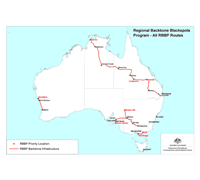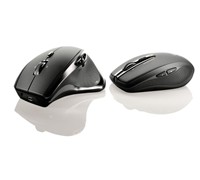The Federal Government plans for mandatory internet filtering may see a wide range of material disappearing from Australian computer screens, according to a report published today.
Untangling The Net: The Scope of Content Caught By Mandatory Internet Filtering was prepared by leading Australian media public policy specialists and members of the ARC Centre of Excellence for Creative Industries and Innovation, Professors Catharine Lumby, Lelia Green, and John Hartley.
The report findings suggest that mandatory internet filtering will put Australia at odds with other Western liberal democracies who have opted almost unanimously for self or co-regulation. While mandatory internet filtering is conventionally framed as a tool to prevent child pornography access, the Government’s policy will catch a far broader scope of content.
The authors also said that it is time to review Australia’s complex and inconsistent media content regulation system to take account of the online era.
Director of the Journalism and Media Research Centre at UNSW, Professor Catharine Lumby said, “The internet is not a medium: it is an entirely new media environment. We need to rethink our flawed and complex system of media content regulation to respond to this new era.”
According to a consultation paper released yesterday by Minister Stephen Conroy the government will introduce legislation which will enable the creation of an RC (Refused Classification) list. Legislation will then be introduced to require all ISPs to mandatorily filter this list. Under the classification guidelines for RC content there is clear potential for a far wider range of material to be placed on this than clearly abhorrent categories of material such as child pornography or active incitement to violence.
While the study found clear public policy reasons for the Government denying access to information that might facilitate access to child pornography or compromise national security, the authors found that material that could potentially be deemed RC includes sites promoting public health initiatives such as harm minimisation in drug use, sites dealing with contentious political debates and sites in designed to give young people an opportunity to discuss sexuality and safe sexual practices.
Professor Lelia Green of Edith Cowan University said, “Under mandatory filtering, the pool of internet content filtered will greatly increase, making it even more important that we pay attention to the scope of the content caught and the right of the public to know what they are being protected from.”
Of a more immediate concern are questions about whether the community will have access to information about what is on the blacklist. The report recognises the complex particularities of the online world, the current flaws in Australian media regulation and the associated inconsistent treatment of online content and delivery compared to traditional media.
With reference to international research, the report argues that Australia should apply a classification system that carefully balances the risks and opportunities of the online world.
“Australia needs to avoid simply applying our current flawed and inconsistent media content regulation regime to a media landscape that is still emerging. The challenges of this environment are equally an opportunity for our Federal Government to rethink media content regulation and to engage in a wide-ranging public discussion about how we move into the 21st century,” concluded Professor Lumby.












